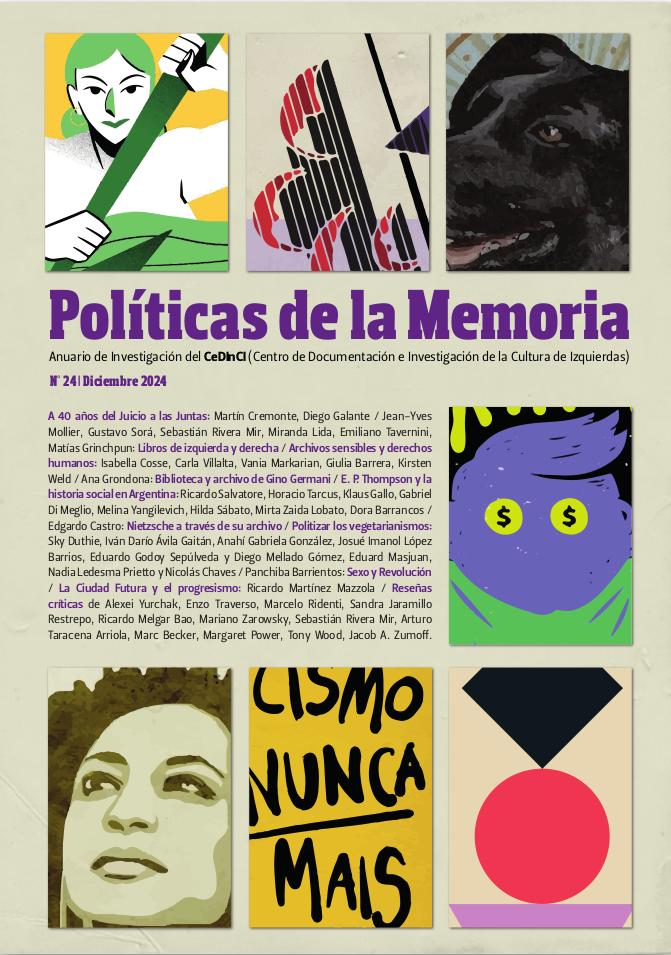Abstract
Work of memory through, in history, there are often scenes that, because of their political impact, their symbolic force, or because they represent the culminating ―and at the same time significant― point of the always uncertain crossing between past and future, or because of all of that together, become emblematic photographs of a specific historical moment.
On Monday, April 22, 1985, in the Courtroom of the National Court of Justice, located in downtown Buenos Aires, such a scene unfolded. “Ladies and gentlemen, please rise,” ordered the court secretary upon the entrance of the judges of the acting tribunal (the National Chamber of Appeals in Criminal and Federal Correctional Matters of the Federal Capital). And then, before the expectant gaze and suspended breath of the audience, the immediate perpetrators of the most atrocious crimes committed in Argentina between 1976 and 1983 stood up. Thus began the Trial of the Military Juntas.
This scene would be repeated in each of the 78 public hearings that made up the Trial: those who, for seven years, had been the hierarchs of life and death, of torture and disappearance, now appeared day after day before Justice; and, from the defendant's bench, stripped of all authority, they obeyed, day after day, the order issued by the previously unknown court secretary upon the entrance of the judges to the room, thus creating an emblematic photograph capable of condensing the new meanings of justice and law that the foundational wills and the emerging democracy of those times would bring ―or, better yet, would bring― with them.
Indeed, the emerging democracy in post-dictatorship Argentina was closely linked to the scene of Justice; and the exceptionality of that scene ―the only case in history in which the ordinary civil justice of a nation judges its own tyrants for the crimes committed― placed our country at the forefront of what has been called, though not without reservations, transitional justice.
The Trial of the Juntas, unimaginable to the majority just months before its realization, had its own history and an equally unimaginable unfolding.
Neither capricious nor obvious, it does not end with the emblematic photograph that catapulted it into collective memory. It was both a point of arrival and a point of departure; and in each of the segments that traced its journey, one can observe the convergence of various actors and conflicts; of political wills and intellectual interventions; of social demands and public re-significations; of tensions, emerging issues, hopes, fears, and frustrations. It is, ultimately, evident that the relevance of the legal field as a space for political and memorial dispute cannot ever be reduced to the institutions and mechanisms that form and regulate the Judiciary.
Forty years after this historic process, Políticas de la Memoria invites its readers to reflect on it through this dossier, which collectively delves into and debates the multiple threads and dimensions that elevated it as one of the great events in our history.
The dossier opens with the article by Martín Cremonte, “Microhistory of Carlos Nino, the philosophers, and Alfonsínist politics. Between Creon and Antigone,” which meticulously and critically reconstructs the philosophical and political postulates of the man who was the great architect of the justice model implemented by the Radical government.
It concludes with the article by Diego Galante, “The Habitability of a Penal Event in Collective Memories.” There, the author positions the Trial of the Juntas as the beginning of a lasting and traceable series―though not without moments of languor or reinterpretation―in the production of practices and social meanings surrounding human rights in Argentina.
Hoping to spark new questions, concerns, and interventions, we wish you a productive reading.
Vera Carnovale
CeDInCI/UNSAM/CONICET

